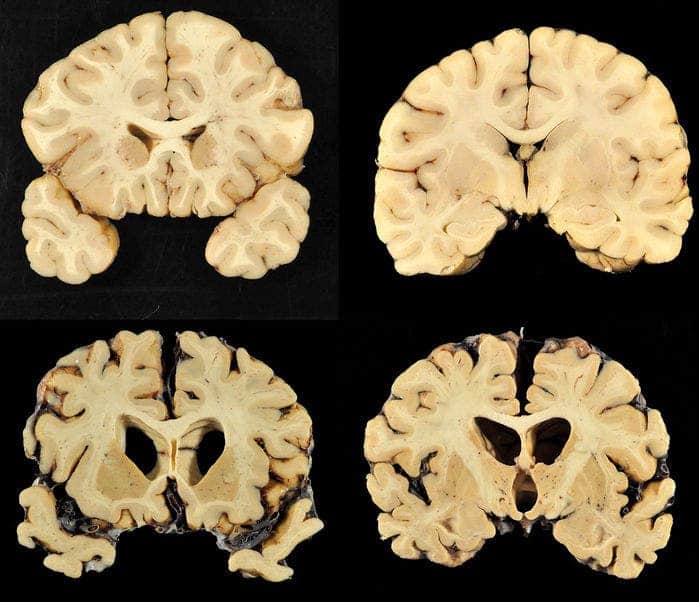
It’s no secret NFL players suffer repeated blows to the head and concussions are common. This lifestyle has been previously associated with a heightened risk of developing neurodegenerative diseases but, really, nothing could prepare us for the latest findings of Dr. Ann McKee. The Boston University neuropathologist examined the brains of deceased of 202 deceased football players, which included 111 former professional NFL players. Of these 111 NFL players, 110 had chronic traumatic encephalopathy, known as CTE and thought to be inflicted by repeated blows to the head. Overall, among the 202 brains, 87% showed the diagnostic signs of CTE.
There is no question anymore this is a problem in football
CTE is a degenerative brain disease commonly found in athletes, military veterans, and others with a history of repetitive brain trauma. The disease was formerly believed to exist primarily among boxers and was referred to as dementia pugilistica, which is now classed as a subtype of CTE.
Individuals suffering from CTE will gradually deteriorate their brains and will end up losing brain mass over the years or decades. Some parts of the brains are particularly vulnerable to atrophy while others are prone to become enlarged. Another defining aspect of CTE is the accumulation of tau protein, which serves to stabilize the cellular structure in the neuron but which can damage the function of the neuron when the protein becomes defective.
Clumps of tau proteins are commonly found in the Alzheimer’s diseased brain but what sets CTE apart is that the tau clumps form around small blood vessels, and most often near the bottom of sulci, the deep folds in the brain’s cortex. Severe CTE also affects deeper brain structures like the hippocampus, the amygdala, and the brain stem.

Mckee and colleagues carefully examined the brains of 202 individuals which were donated by their families to the National Institutes of Health. The men were as young as 23 and as old as 89 when they died, and included a mix of former college football players, NFL players, and a couple of individuals who played football during high school.
The researchers strikingly found signs of CTE in 48 of 53 brains of former college players, seven of eight who played professional football in Canada and nine of 14 semiprofessional players. Astonishingly, 110 of the 111 former NFL players had CTE. Overall, 86 percent of former professional players had severe disease, and 56 percent of college players, the team reports today in The Journal of the American.
Linemen made the bulk of the individuals studied by McKee’s team. They’re the ones who knock heads the most during a game although they might not be as violently hit as a quarterback. Previously, a team from Stanford found that the average college offensive lineman sustains 62 blows to the head in a single game. Each hit strikes the head with a force equivalent to that of a car crashing into a brick wall at 30 mph.
The symptoms of CTE can be debilitating and may have life-changing effects for both the individual and for his or her family. Common symptoms include memory loss, difficulty controlling impulsive or erratic behavior, impaired judgment, behavioral disturbances including aggression and depression, difficulty with balance, and a gradual onset of dementia.
About 96 percent of the donors whose brains were diagnosed with CTE experienced progression of their symptoms during life. In fact, this is precisely the reason why the brains were donated by the deceased’s family. It’s very important to keep this in mind given the selection bias. At the same time, CTE can only be diagnosed after death and since the Boston University group started their study, some 1,300 former NFL players have died. Even considering these 1,300 as an undiagnosed nebulous, if we add the confirmed CTE diagnoses, we still end up with a minimum C.T.E. prevalence close to 9 percent, which is vastly higher than in the general population.
Previously, questionnaire-based studies of retired NFL players found depression and memory loss symptoms — both hallmarks of CTE — were presented in 5% to 20% of sampled individuals. This figure might be representative of the CTE prevalence given the present findings.
Whatever’s the case, given the significant prevalence and worrisome symptoms of CTE, much more research is warranted so we can fill in the blanks and, most importantly, devise new ways to protect and treat football players. At the end of the day, football players should be made more aware of the health risks their subjecting themselves.






